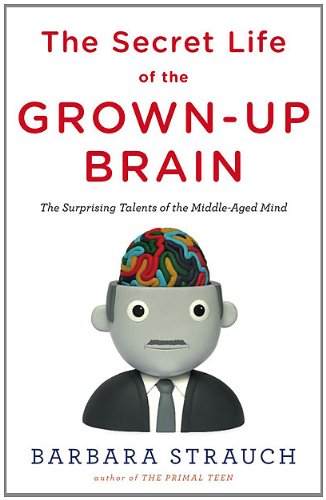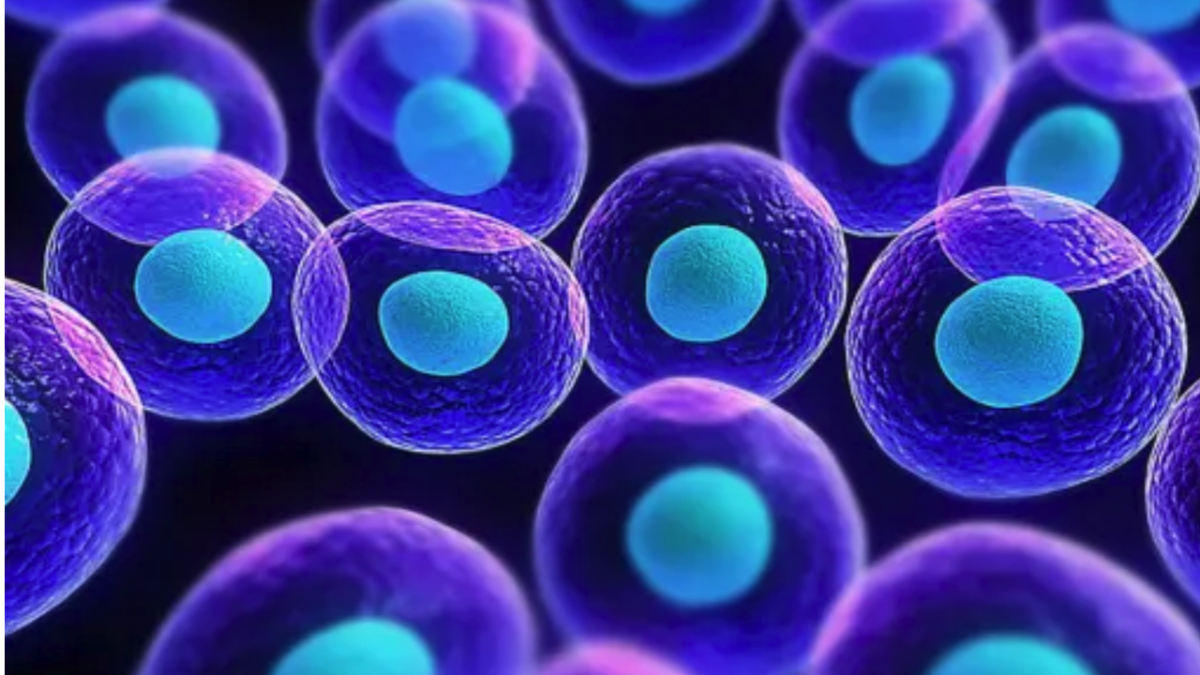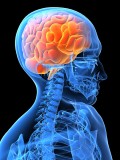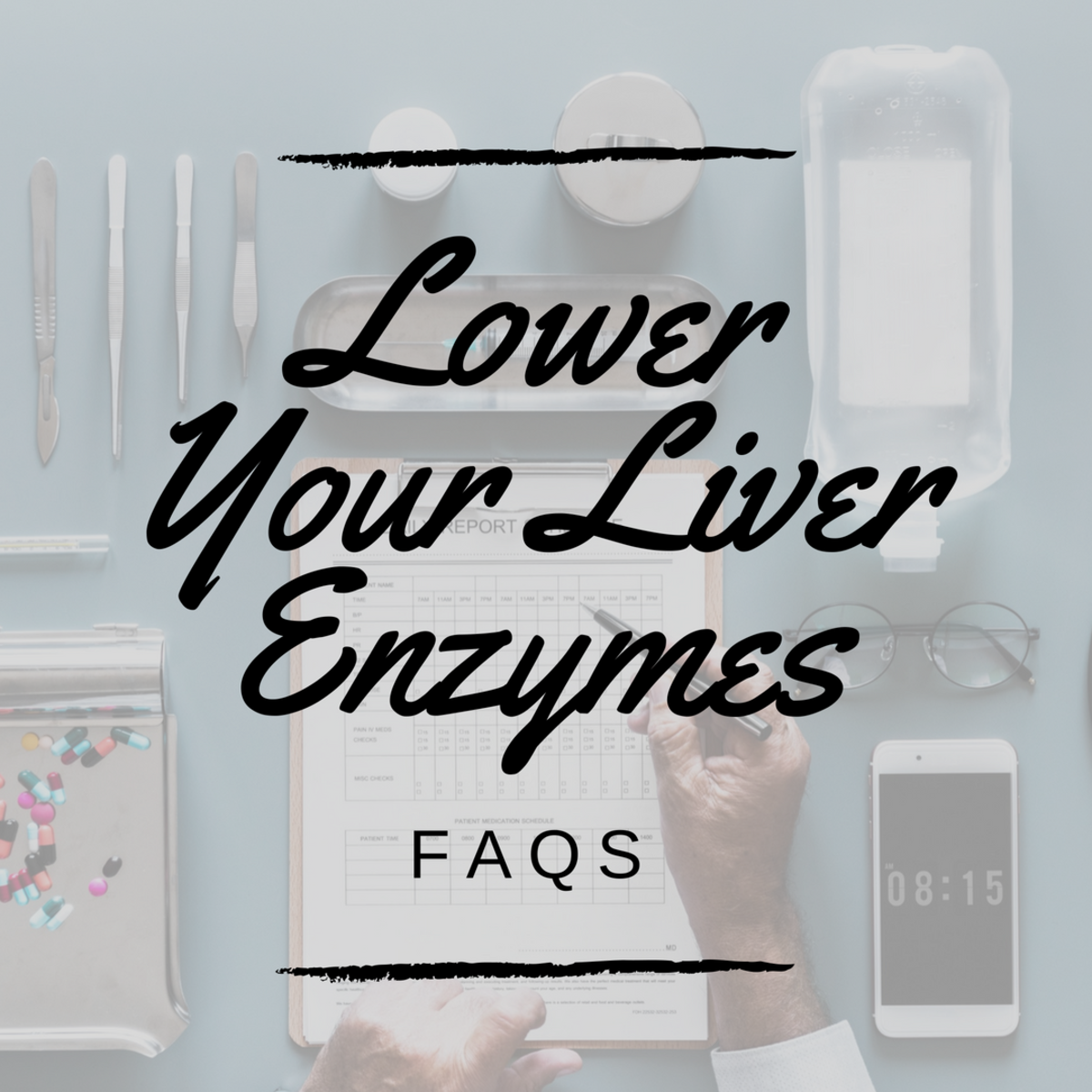Physical Exercise Improves the Brain
We all know that exercise improves muscle tone and your cardiovascular system. But did you know that it also improves brain health?
Many studies have shown that it does. Considering that your brain consumes about 20% of the oxygen even though it is only 2% of the body by mass, it makes sense that what is good for the heart is also good for the brain. At rest, the brain uses 10% of the body's oxygen, but in heavy mental activity, it can use up to half the body's oxygen supply. In addition, 15% of what your heart's cardiac output goes to the brain. So for the brain to function optimally, keep your arteries clear and your blood flowing. Brain cells starts dying 4 to 6 minutes without oxygen.
Basically, exercise produces chemicals that stimulate growth of blood vessels. By improving the health of your arteries and capillaries, exercise also reduces the chance of a stroke (think of a stroke as a "heart attack" in the brain).
For a scientific explanation of how exercise affects the brain, you should read the book Spark: The Revolutionary Science of Exercise and the Brain.
It says that when you work your muscles ...
"Your body knows it needs a more robust oxygen-delivery system, so the muscles release vascular endothelial growth factor (VEGF) and fibroblast growth factor (FGF-2), and they start cells dividing to make more tissue for more blood vessels ... in addition to building new blood vessels, these two factors also encourage cell binding and neurogenesis." [p253]
Exercise Stimulates Neurogenesis
Neurogenesis is the birth of new brain cells.
In her book The Secret Life of the Grown-up Brain, Barbara Strauch writes ...
"At this point, the most promising answer is exercise. In one rigorous study after another, exercise has emerged as the closest thing we have to a magic wand for the brain, the best builder of branches, baby neurons, and, along with education, perhaps, the mental padding of cognitive reserve." [p126]
Columbia neuroscientist Scott Small and colleagues inject mice with a chemical marker that detects birth of new brain cells. When they saw their computer screen light up with green dots while scanning the brains of a group of exercised mice, Scott Small said ...
"To see it so clearly, new brain cells that came with exercise, it was impossible to ignore. My colleagues started putting on their sneakers."[p126]
presumably to go running.
New brain cells were being born in an area of the hippocampus known as the dentate gyruses. They know that this cell birth is enhanced by exercise since another non-exercised group of mice had only half as many brain cell births.
Yes, the exercised mice had more new brain cells. But how effective are these new brain cells? Unfortunately, about half of the new cells dies. But those that survive does integrate into the brain circuitry to helps us make associations between old and new information. Neuroscientist Fred Gage believes that this process helps alleviate depression and helps us maintain interest in the world. Afterall, one symptom of depression lack of interest.
But what about cognitive performance? Gage put exercised mice to the Morris water maze test to determine mice cognitive abilities. And indeed exercised mice performed better than their non-exercised counter-parts.
Gage also found in later studies that even elderly mice can benefit from exercise. So if you have been sedentary in the past, it is still not too late to start exercising.
Number One Rule for the Brain
John Medina wrote a book call Brain Rules: 12 Principles for Surviving and Thriving at Work, Home, and School.
Guess what was his rule number one? It is "Exercise boosts brain power". He says ...
"A lifetime of exercise can result in a sometimes astonishing elevation in cognitive performance, compared with those who are sedentary. Exercise out perform couch potatoes in tests that measure long-term memory, reasoning, attention, problem-solving, and even so-called fluid-intelligence tests." [page 14]
Neurogenesis Does Occur In Humans
It is true that most of these types of studies are done on mice and rats. This is because some of the chemical markers used in mice are now banned on human. However, it is believed that this type of neurogenesis process is true in humans as well. The outdated theory that the human brain can not grow new brain cells is false.
By using magnetic resonance tests on exercising middle-aged people, researchers deduced that neurogenesis was occurring in humans.
Using a technique that tags newly formed DNA in cells, MIT scientist Joseph Altman found that new neurons occurred in rats (not just mice). Then he found that neurogenesis occurred in cats, and in guinea pigs. Other studies showed that it occurred in songbirds. Other researcher then found that it occurred in monkeys.
Now it would be crazy if it didn't occurred in humans as well. And indeed, neurogenesis does occur in humans. In 1998, Gage published a paper that says "Our results further indicated that the human hippocampus retains its ability to generate neurons throughout life".
Gage in collaboration with neuroscientist Peter Eriksson determined this by obtaining brain slices from patients who had died of cancer. These patients happened to have had injections of BrdU for diagnosis purposes. BrdU marks dividing cells (such as in cancer cells). But when they found BrdU markers in neurons of hippocampus, it implies that there are new cells forming there.
More Evidence of Exercise's Benefit
Memory Disorder Project at Rutgers University published article re-iterating the role that exercise plays in neurogenesis, it says "exercise supports the growth and survival of new brain cells in the hippocampus" [1]
Not only does exercise generate new neurons, but it also improves the health of the brain's support cells known as glial cells.
Article by the DANA Foundation says that ...
"Exercise also seems to benefit glial cells, the nonneuronal brain cells that support synaptic transmission and ensheathe neural fibers with myelin, a fatty substance that speeds nerve signaling. Each of these effects may be driven in part by increased blood flow to the brain, a well-documented benefit of physical activity."[2]
Exercise May Help Prevent Dementia
The hippocampus is the region of the brain partly responsible for memory and spatial navigation. A study shows that fit individuals performed better in spatial memory test and have larger hippocampus size.
In Alzheimer's Disease, it is often the hippocampus that is the first to be damaged.
Not only does exercise improve brain function. It sometimes even improves the structure of the brain such that certain regions of the brain are actually larger in fit individuals than those not-so-fit.
The Rutgers article also says "The evidence is growing that moderate regular exercise boosts memory and other brain functions and may help prevent age-related declines."[1]
It notes rat studies that "shows convincingly that you can preserve your mental skills as you age, regain some of the horsepower you’ve already lost, and even help to stave off Alzheimer’s disease and other forms of dementia."[1]
Aerobic exercise is the key. It is "any rhythmic activity that engages the large muscle groups of the body". The article says that walking would qualify -- such as a brisk 45-minute walk, three or more times per week."
It is known that brain size decreases with age. However, there is a 2006 study showing that those over 60 who did regular aerobic exercise for six months had increased their brain volumes -- this occurred in the grey matter of the frontal lobes' and the white matter of their corpus callosum. And this didn't have to be very strenuous exercise. Strauch writes [page 140]:
"Those who spent about an hour walking around a gym three times a week -- at a pace of three miles an hour -- had brain volumes of people three years younger."
Strength Training May Also Be Beneficial
Considering the health benefit, exercising would definitely be a good long-term investment in brain health.
Most sources do say that aerobic exercise is the best type of exercise in term for brain health. And many experiments do focus on aerobic exercise. After-all mice can easily do aerobics on a running wheel, but they don't lift weights easily. However, a few studies do show that resistant training can also improve cognition. The article Exercise and cognition in older adults: is there a role for resistance training programmes? says ...
"These studies highlight that aerobic-based exercise training enhances both brain structure and function. However, it has been suggested that other types of exercise training, such as resistance training, may also benefit cognition. ... Three recent randomized exercise trials involving resistance training among seniors provide evidence that resistance training may have cognitive benefits"
Quotes from Numerous Other Studies
Numerous scientific studies says the same thing. Some examples are ...
"Aerobic fitness and exercise are effective at preventing cortical decay and cognitive impairment in older adults and epidemiological studies suggest that physical activity can reduce the risk for developing dementia."
"Human and non-human animal studies have shown that aerobic exercise can improve a number of aspects of cognition and performance."
This include academic performance in students.
- Page 207 of "Super Brain: 101 Easy Ways to a More Agile Mind":
“physical exercise can also boost your brain power. Keeping fit is vital for your brain, as it improves blood flow to your brain cells, increasing the supply of oxygen, glucose energy, and other nutrients to keep it functioning efficiently.”
- From page 330 of The Alzheimer's Action Plan:
"Exercise is particularly important: It has one of the best track records of the strategies we discuss and will probably give you the biggest return on your investment of time and energy."
- Page 329 of Brain Longevity:
"exercise achieves three primary benefits for the brain: (1) it stimulates production of nerve growth factor; (2) it is a powerful tool for stress management; and (3) it enhances neuronal metabolism."











